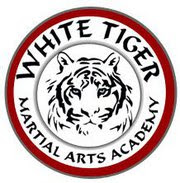KYOKUSHIN Southern Kata
The southern kata stems from the Naha-te tradition of karate, and are mostly drawn from Goju-ryu karate, which Oyama learned while training under Gogen Yamaguchi.
The exception the kata "Yantsu" which originates with Motobu-ha Shito-ryu.
We cannot discount the Shuri Te influence on Shorei Ryu, which then influenced Goju and Shito - while Shuri directly influenced Shorin and Shotokan, to state the lines as Naha-Shorei-Goju and Shuri-Shorin- Shotokan is to oversimplify - and their are noted Shorei kata in Shotokan
Shuri Te
Shorei-Ryu,
Shitō-ryū, Goju-Ryu
Naha Te
Shōrei-ryū
Gōjū-ryū, Shito-ryu
Southern Kata
Gekisai Dai
Gekisai Sho
Gekisai was created by Chojun Miyagi, founder of Goju-ryu karate.
The name Gekisai means "attack and smash".
Tensho
draws it origin from Goju-ryu where it was developed by Chojun Miyagi, who claimed credit for its creation.
There are however some who claim that it is merely a variation of an old, and now lost, Chinese kata known as "rokkishu"
It is based on the point and circle principles of Kempo.
It was regarded as an internal yet advanced Kata by Oyama.
The name means "rotating palms".
Sanchin
a very old kata with roots in China.
The name translates to "three points" or "three battles".
The version done in kyokushin is most closely related to the version Kanryo Higaonna, teacher of Chojun Miyagi
Saifa (Saiha)
A kata with Chinese influences,
its name translates to "smash and tear down". T
he kata may have been brought from China by Higaonna, taught and developed by Chojun Miyagi.
Seienchin
Originally a Chinese kata, regarded as very old. It was also brought to Okinawa by Kanryo Higaonna.
The name translates roughly to "grip and pull into battle".
Seipai
Originally a Chinese kata.
It was also brought to Okinawa by Kanryo Higaonna.
The name translates to the number 18, which is significant in Buddhism.
Yantsu
an old kata with unknown origin that is alternately classified as belonging to the Naha-te or Tomari-te karate tradition.
Outside of kyokushin, it today is only practiced in Motobu-ha Shitō-ryū
The name Yantsu translates to "keep pure".
How the kata was introduced into Kyokushin is unknown, probably imported from Motobu-ha Shito-ryu.
Tsuki no kata
This kata was created by Seigo Tada, founder of the Seigokan branch of Goju-ryu.
In Seigokan goju-ryu the kata is known as Kihon Tsuki no kata and is one of two Katas created by the founder.
Garyu
Unique to Kyokushin.
Does not originate from traditional Okinawan karate,
was created by Oyama and named after his pen name, Garyu.
So, as can be seen below, the GOJU Kata not taken into Kyokushin:
Shisochin
Sanseiru
Kururunfa
Seisan
Suparinpei
